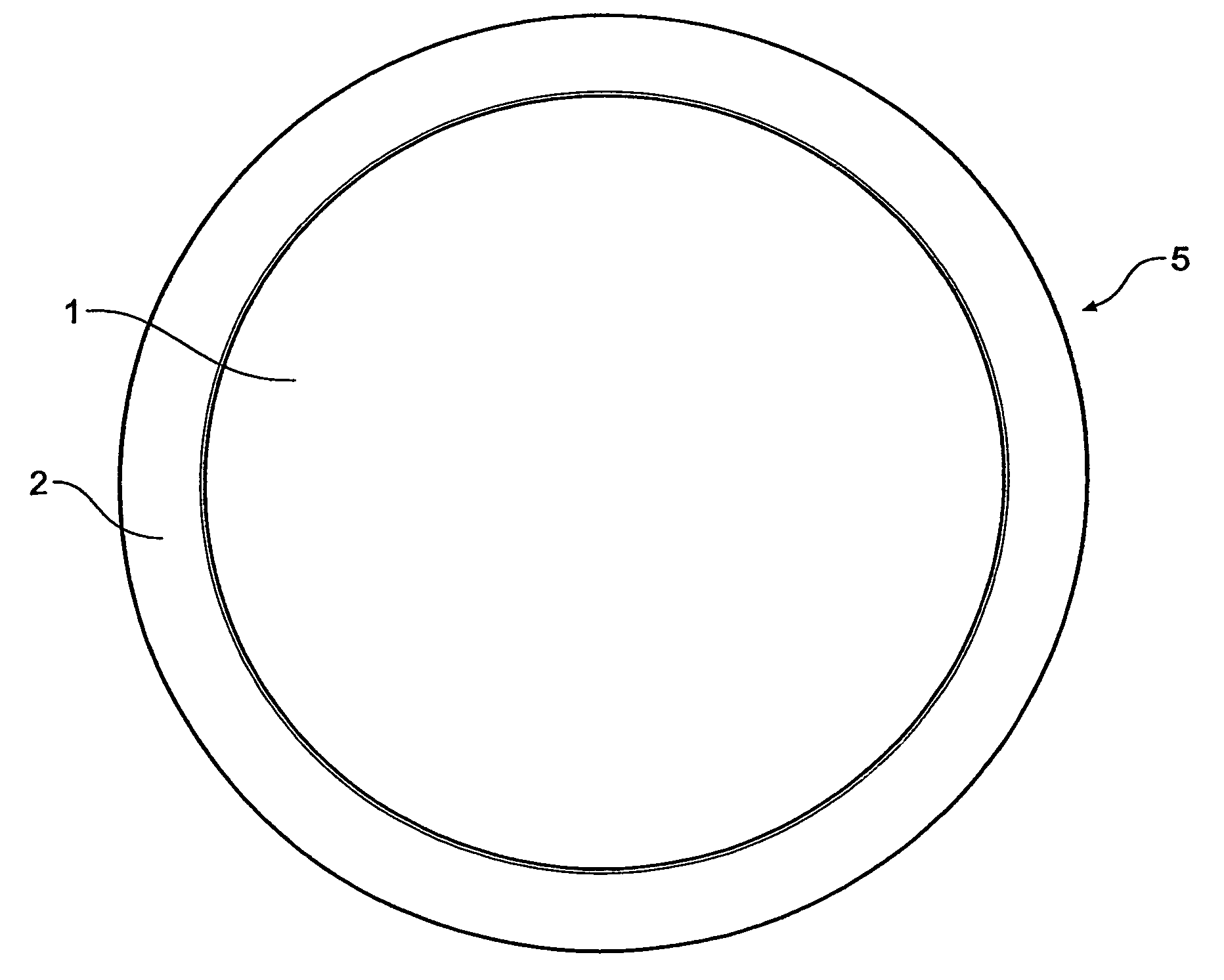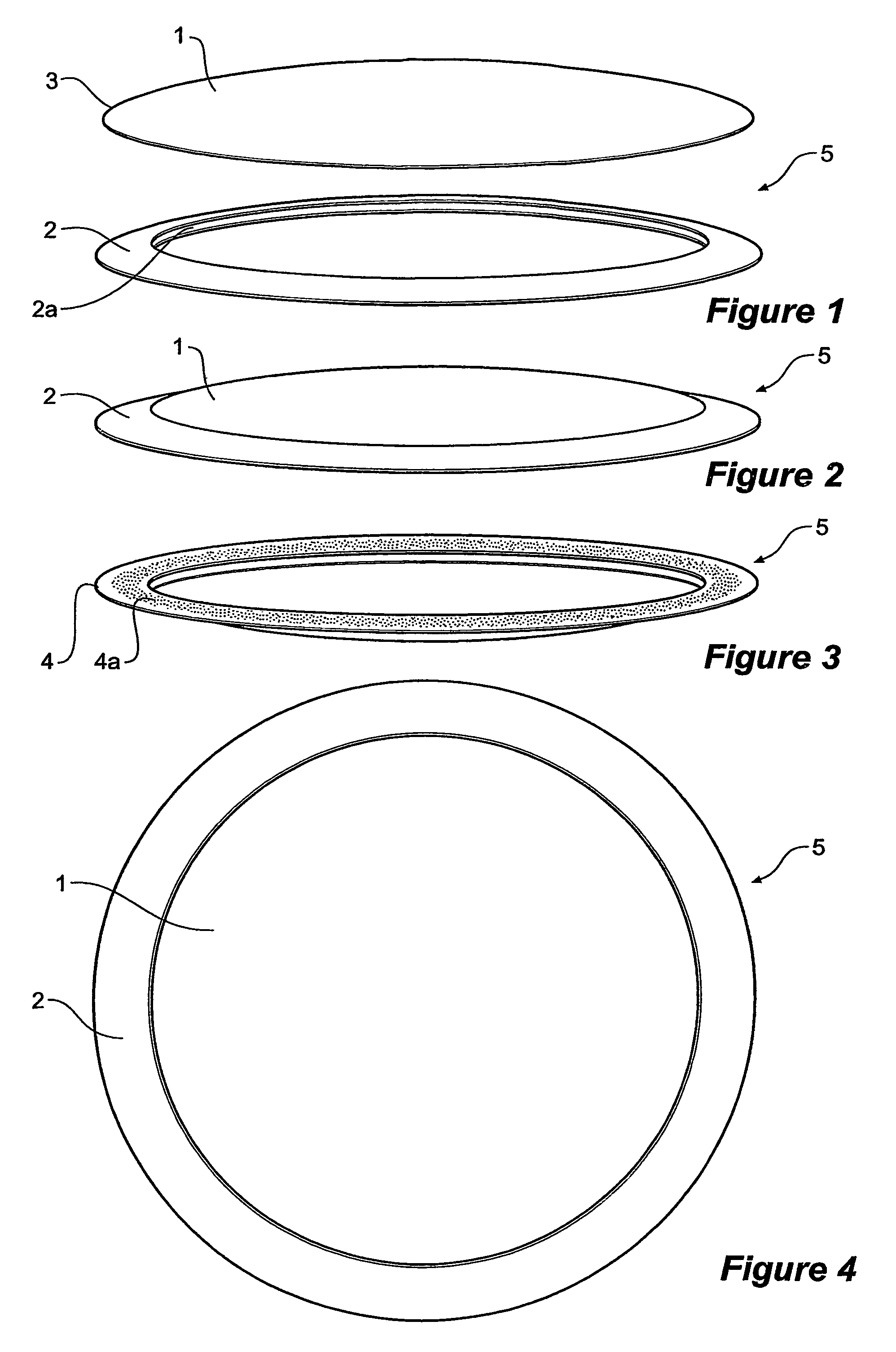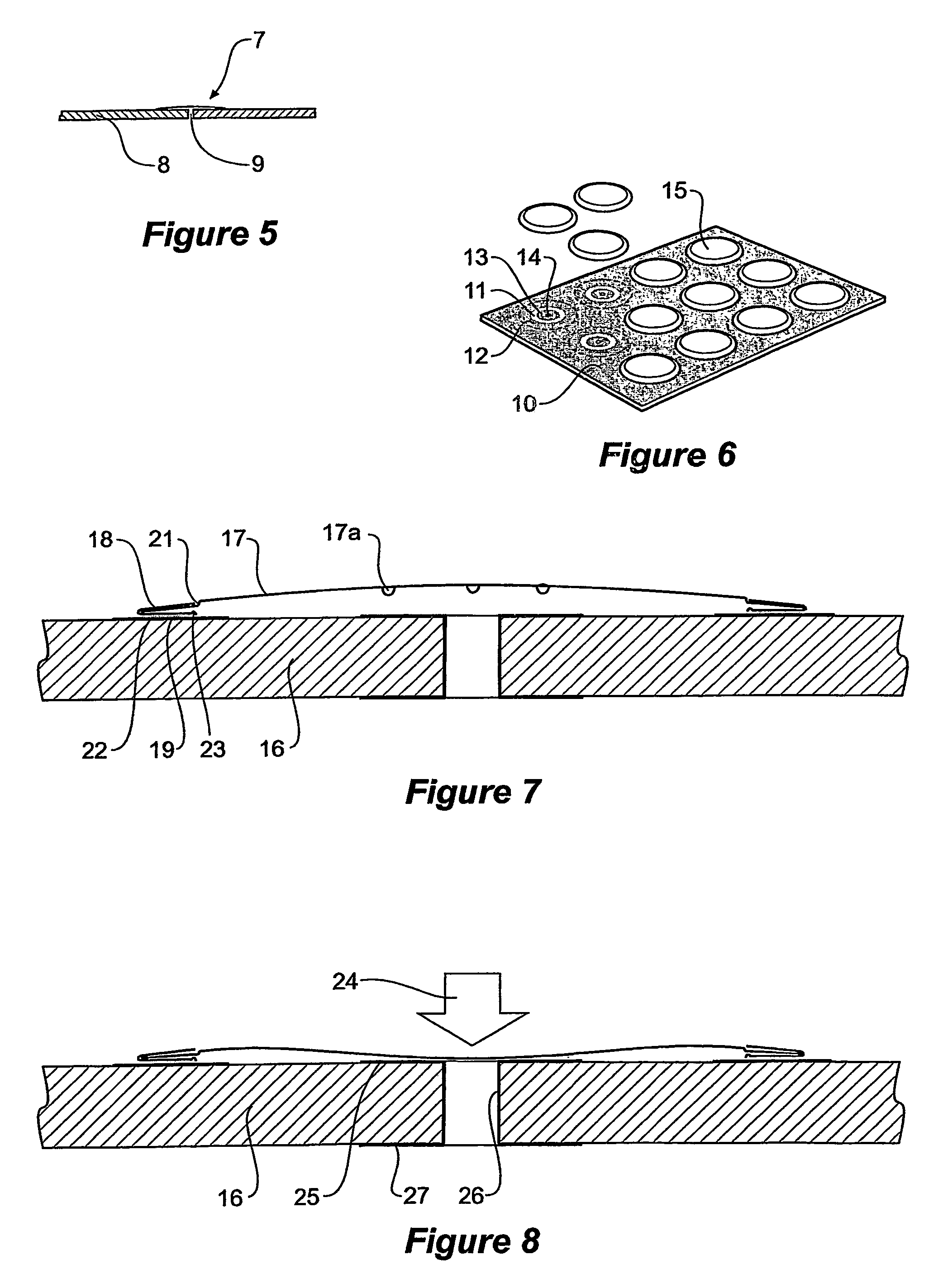Switch element
a technology of switch element and contact element, applied in the field of switch element, can solve problems such as failure of switching function, and achieve the effect of exemplifying the performance of the contact elemen
- Summary
- Abstract
- Description
- Claims
- Application Information
AI Technical Summary
Benefits of technology
Problems solved by technology
Method used
Image
Examples
Embodiment Construction
[0062]FIG. 1 shows an exploded perspective view of a contact element 1 and an associated bearer element 2 of a switch element 5. In this example, the contact element 1 is a diaphragm in the form of a shallow metal dome.
[0063]FIG. 2 shows the switch element 5 with the contact element 1 retained within the bearer element 2. The switch element, once assembled together, forms a unit, the parts of which are expected to be inseparable in all ordinary circumstances of application and operation. The diameter of the contact element is such that its rim 3 (see FIG. 1) will be held captive by the curved lip and so-formed inner surfaces of the bearer element which is in a C shape facing with its open side toward the centre of the bearer element. The rim of the diaphragm rests upon the hard inner surface of the bearer element, or may be additionally, lightly constrained by the internal “crease” formed by the retaining lip. The dimensions and profile of the diaphragm can be such that, in its un-a...
PUM
 Login to View More
Login to View More Abstract
Description
Claims
Application Information
 Login to View More
Login to View More - R&D
- Intellectual Property
- Life Sciences
- Materials
- Tech Scout
- Unparalleled Data Quality
- Higher Quality Content
- 60% Fewer Hallucinations
Browse by: Latest US Patents, China's latest patents, Technical Efficacy Thesaurus, Application Domain, Technology Topic, Popular Technical Reports.
© 2025 PatSnap. All rights reserved.Legal|Privacy policy|Modern Slavery Act Transparency Statement|Sitemap|About US| Contact US: help@patsnap.com



